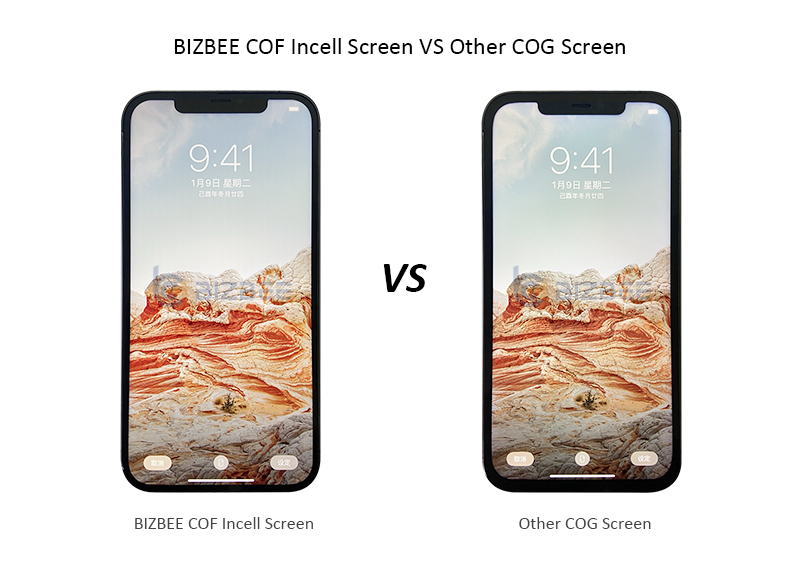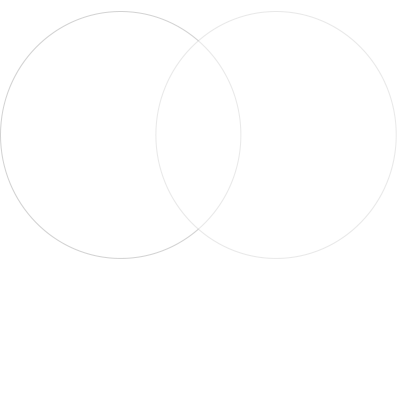 iPhone 14 Pro
iPhone 14 Pro  iPhone 14 Plus
iPhone 14 Plus  iPhone 14
iPhone 14  iPhone 13 Pro Max
iPhone 13 Pro
iPhone 13
iPhone 13 Mini
iPhone SE 2022
iPhone 12 Pro Max
iPhone 12 Pro
iPhone 13 Pro Max
iPhone 13 Pro
iPhone 13
iPhone 13 Mini
iPhone SE 2022
iPhone 12 Pro Max
iPhone 12 Pro  iPhone 12
iPhone 12 Mini
iPhone 11 Pro Max
iPhone 11 Pro
iPhone 11
iPhone XS Max
iPhone XS
iPhone XR
iPhone X
iPhone SE 2020
iPhone 8 Plus
iPhone 8
iPhone 7 Plus
iPhone 7
iPhone 6s Plus
iPhone 6s
iPhone 6 Plus
iPhone 6
iPhone SE
iPhone 5s
iPhone 5c
iPhone 5
iPhone 12
iPhone 12 Mini
iPhone 11 Pro Max
iPhone 11 Pro
iPhone 11
iPhone XS Max
iPhone XS
iPhone XR
iPhone X
iPhone SE 2020
iPhone 8 Plus
iPhone 8
iPhone 7 Plus
iPhone 7
iPhone 6s Plus
iPhone 6s
iPhone 6 Plus
iPhone 6
iPhone SE
iPhone 5s
iPhone 5c
iPhone 5


There are two main screen packaging structures in the aftermarket screen industry: Chip On Glass (COG) and Chip On Flex (COF). These two structures are different in terms of screen display size and cost, etc. Let’s take a deeper look into what the differences are between COF and COG.
COG: Traditional Packaging Technology
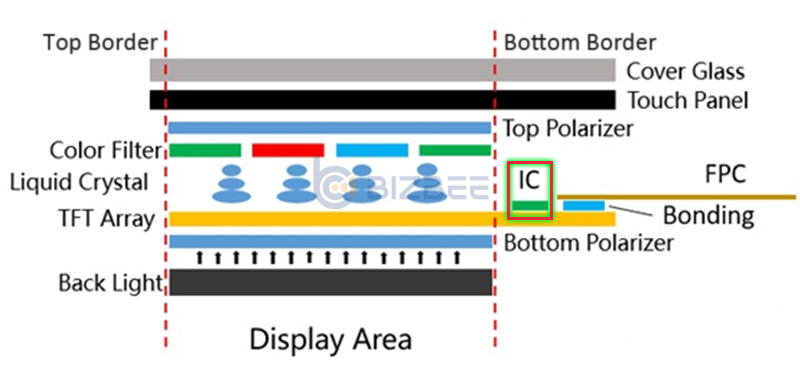
Before entering the era of 18:9 "full screen", the screen of smartphones generally adopted a packaging technology of "COG" (Chip On Glass), that means the IC chip is directly bound to the glass surface of the LCD screen. This packaging technology can greatly reduce the volume of the entire LCD module, with high yield, lower cost and easy mass production. The problem is that glass can't be folded and curled, and with the cables attached to it, it's doomed to have a wider "bottom frame" to match.
The traditional COG technology generally integrates the chip on the glass backplane. Due to the large size of the chip, the frame is still relatively wide, which is mainly reflected at one end of the cable. Xiaomi's MIX adopts the COG packaging process, so the bottom frame will be so wide, because many cables are concentrated at the bottom 4 mm. In addition to Xiaomi MIX, LG's G6 and V30 also use COG packaging technology.
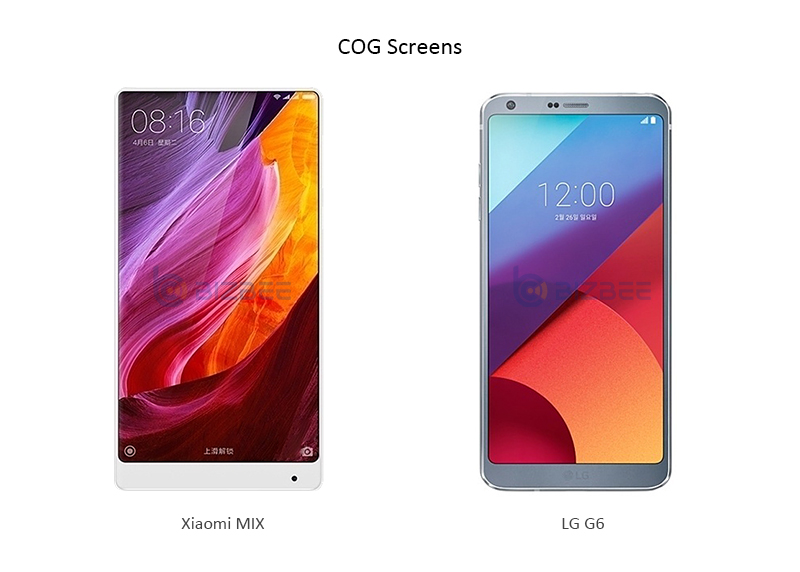
COF: The Best Partner for Full Screen
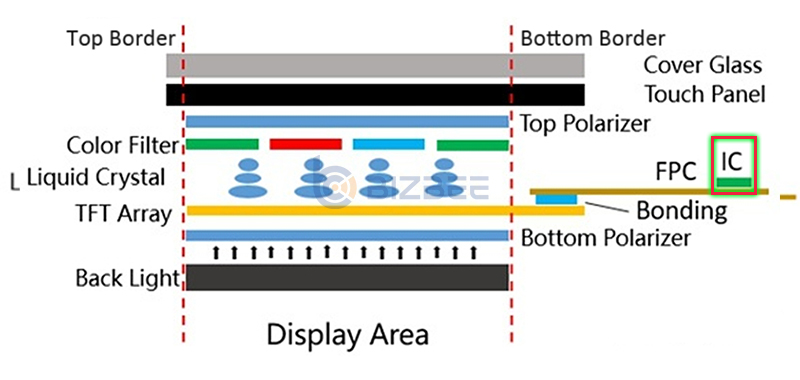
"COF" (Chip On Flex or Chip On Film), also known as chip-on-film, compared with COG, the biggest improvement is to fix the touch IC and other chips on the flexible circuit board. The flexible add-on circuit board is used as the packaging chip carrier to join the chip and the flexible substrate circuit. A more intuitive expression is that the IC is embedded on the FPC soft board, that is to say, it is attached to the cable between the screen and the PCB motherboard. At the same time, it can be folded back to achieve full screen as much as possible.
The COF packaging process is a very important packaging technology in the current popular full-screen era, and is generally used in flagship mobile phones, including LCD screens and OLED screens. The reason why Huawei Mate 20 Pro can achieve an ultra-narrow bezel and an ultra-narrow bottom frame, without a bottom frame like the Xiaomi MIX series, is because it adopts the COF packaging process of Synaptics, including ClearView driver IC and ClearPad touch IC. There are still a lot of COF packaging in the industry, Apple iPhone XR, Samsung S9, vivo X21, OPPO R17, Xiaomi MIX 2S, etc., all use COF packaging technology.
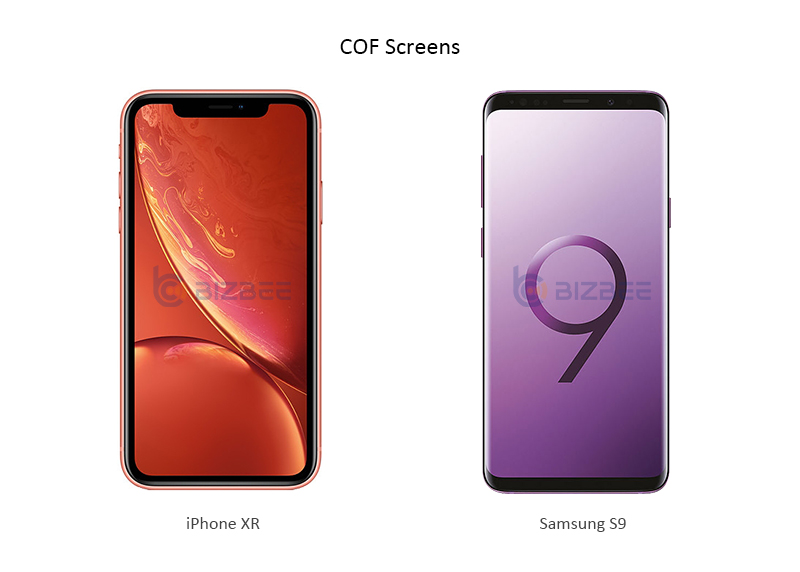
The Difference Between COG and COF
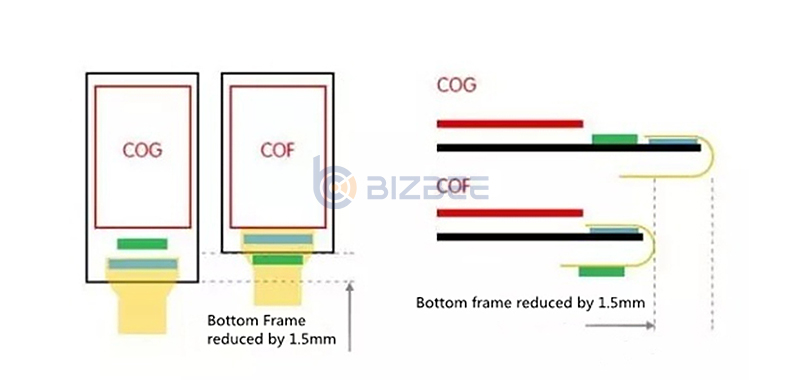
Most of the mobile phones nowadays use COF packaging technology instead of traditional COG packaging technology. So that the chip can be placed directly at the bottom of the screen, leaving 1.5 mm more screen space than COG.
BIZBEE have been committed to providing customers with better quality aftermarket screens, so our NCC Incell screen for iPhone series also uses COF packaging technology, the width of bottom frame is very close to the original, and the quality is more stable, which has a good common evaluation by our customers.
